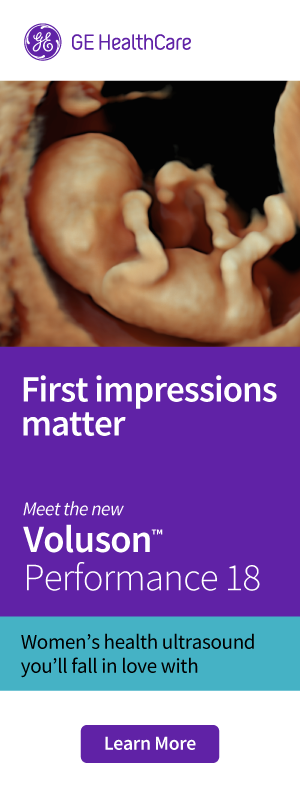Endometriosis is a chronic inflammatory condition that significantly contributes to pelvic pain and infertility in women of reproductive age. Up to 50% of women struggling to conceive have endometriosis.1 Characterised by the presence of endometrial-like gland cells outside the uterus, endometriosis disrupts the entire pelvic region. This disorder creates adhesions, anatomical distortions, and scarring on the ovaries, fallopian tubes, and pelvic sidewalls.
To illustrate this, think of the pelvis as a car engine. For optimal performance, every component must operate smoothly, much like a well-oiled machine. In endometriosis, endometriotic deposits act like sand in the gears, reducing lubrication and causing friction severely impacting pelvic mobility. This ‘stickiness’ and inflammation caused by the endometrial-like glands has a profound impact on fertility. It poses risks such as reduced ovarian reserve, significant anatomical distortion, and a decrease in the quality of eggs and embryos, all of which adversely affect fertilisation and implantation.2 Understanding these effects is crucial for addressing the challenges associated with endometriosis and fertility.
Moderate to severe endometriosis, specifically stage III and stage IV, is characterised by the presence of deeply invasive endometriosis with moderate to extensive adhesions between the uterus and the bowels, as well endometrioma cysts that involve the ovaries and fallopian tubes. Stage IV, the focus of this article, extends to the bowel, bladder or ureter and is often termed “frozen pelvis.” Surgical intervention for Stage IV endometriosis carries immanent risks, including the potential for irreversible damage to the gastrointestinal tract or genitourinary system. However, benefits such as pain relief and improved fertility often outweigh these risks, particularly when these complex pelvic surgeries are undertaken by highly specialised and experienced endometriosis surgeons.3 In terms of fertility outcomes, expectant management of stage III and stage IV endometriosis yields minimal favourable results. For Stage III endometriosis, the spontaneous pregnancy rate is approximately 33%, while for stage IV, almost an insignificant chance.4
When managing patients with stage IV endometriosis, a multidisciplinary approach is essential. A comprehensive medical history, particularly regarding fertility, is crucial and should be correlated with the patient’s pain profile, along with findings from advanced imaging techniques such as a deep infiltrating endometriosis scan or a pelvic MRI. Referrals to specialists, such as a colorectal surgeon or a urologist, may be necessary based on the specific organs affected by the endometriosis. Additionally, it is advisable to schedule an early fertility consultation, considering the patient’s age and all fertility investigations such as Hy-Co-Sy and anti-Müllerian hormone levels. If the patient experiences pain alongside difficulties in conceiving, involving a pain specialist in their care is important. Furthermore, a pelvic floor physiotherapist can play a significant role in managing pelvic pain.
Surgery should be carried out only after a comprehensive review of all imaging modalities, with the most effective approach being a formal pre-operative multidisciplinary team meeting dedicated to complex pelvic surgery cases. In this critical forum, surgeons collaboratively assess potential risks and determine the necessity of pre-operative procedures such an examination under anaesthesia, colonoscopy, sigmoidoscopy, or cystoscopy.
As the surgical plan takes shape, adopting a coordinated approach that involves multiple surgeons, alongside a comprehensive informed consent process, represents the gold standard for patient care. Pictorial and video documentation also plays a vital role for both the patient and the fertility specialists involved, particularly when preparing for egg retrievals. This visual documentation not only enhances the surgeon’s ability to explain the extent of the disease affecting couples striving to conceive but also acknowledges their struggles, while validating the pain experienced by patients suffering from chronic pelvic pain. Such comprehensive planning and documentation ensure that patients receive the highest quality of care and support during their journey.
Post-operative care should be conducted at regular intervals for patients who are trying to conceive. It is crucial for the endometriosis surgeon to evaluate symptoms in detail every three to six months, especially for couples on their journey to parenthood. Symptoms of recurrences should be monitored especially when there will be no hormonal suppression due to the desire of pregnancy. In individual cases where spontaneousconception does not occur within the desired timeframe, the early implementation of assisted reproductive technology should be strongly advocated to significantly enhance fertility outcomes.
In conclusion, it is recommended that patients facing infertility with pelvic pain should undergo early tertiary imaging, and this can be organised by general practitioners. A deep infiltrating endometriosis scan or pelvic MRI is essential, even if there is minimal pain. If stage IV endometriosis is diagnosed, an immediate referral to an endometriosis surgeon with credentials for complex pelvic surgeries—working alongside co-surgeons such as a colorectal surgeon or a urologist—is crucial. Furthermore, involving a fertility specialist in the management of these complex cases is vital to maximise the chances of achieving successful fertility outcomes.
References
- Viganò P., Parazzini F., Somigliana E., Vercellini P. Endometriosis: Epidemiology and aetiological factors. Best Pract. Res. Clin. Obstet. Gynaecol. 2004;18:177–200. doi: 10.1016/j.bpobgyn.2004.01.007
- Gupta S., Goldberg J.M., Aziz N., Goldberg E., Krajcir N., Agarwal A. Pathogenic mechanisms in endometriosis-associated infertility. Fertil. Steril. 2008;90:247–257. doi: 10.1016/j.fertnstert.2008.02.093
- M. Leonardi, T. Gibbons, M. Armour, et al. When to do surgery and when not to do surgery for Endometriosis: a systematic review and meta-analysis J Minim Invasive Gynecol, 27 (2) (2020 Feb), pp. 390-407
- G.A. Dunselman, N. Vermeulen, C. Becker, et al.European Society of Human Reproduction and Embryology. ESHRE guideline: management of women with endometriosis Hum Reprod, 29 (3) (2014 Mar), pp. 400-412






Leave a Reply